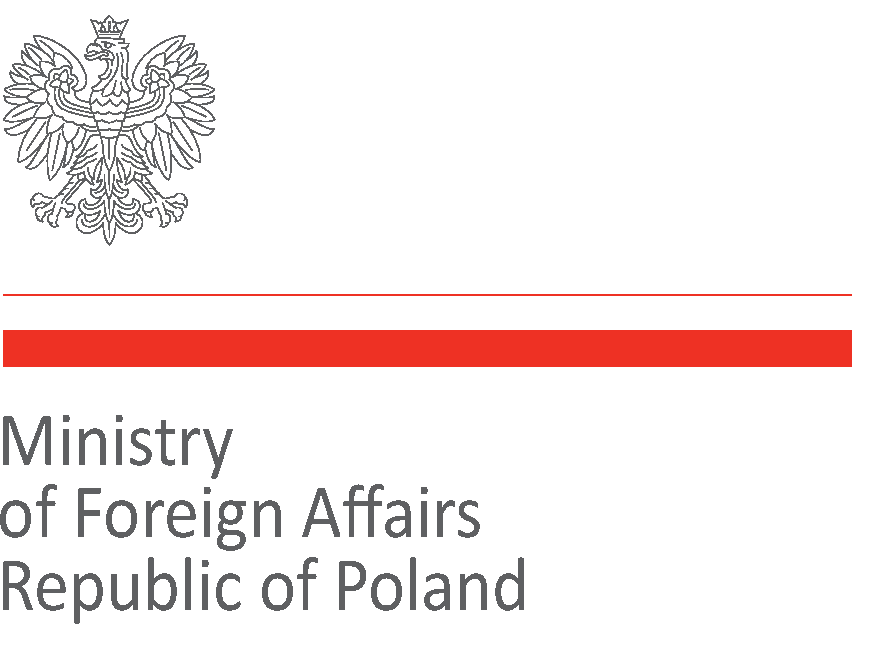Cracow, 16 July [1929]
The idea of the United States of Europe made famous by the speech recently delivered by Aristide Briand[1] is – as we have already mentioned in the publication – undoubtedly noble and grand. There is no point wasting words for describing all benefits and betterments this idea would bring to European nations when put into effect. All that is known and clear. Therefore, the idea has no actual opponents and cannot have any. Critical voices that can be heard concern not the idea itself but its feasibility. Difficulties on that side are so enormous and various doubts spring to mind so automatically that one does not need to be a born naysayer to see them all and understand them.
The first “Pan-European”
Fifty years ago one of the creators of modern sociology – Novikov,[2] a Russian writing in French and permanently residing in Paris, while describing the tendencies in the development of states and societies of that time, made a presumption that Europe would one day transform into a certain kind of united states. However, it was merely a remark added as an aside, to which the author apparently attached small importance, since he never closely analysed the factors behind that envisagement.
The idea of the United States of Europe was thenceforth forgotten. It was readdressed after the last war, when amid the horror of its consequences and fear of another war, nations realised that they were playing a foul game and unless they stopped soon enough, they were going to become like Radziwiłł’s mice biting each other until only tales were left.
The quest of Count of Coudenhove-Kalergi
When looking for a motto that would make all post-war pacifists combine forces, the lively and bold thinker, and skilled organiser, Count Coudenhove-Kalergi[3], produced an idea of so-called Pan-Europe, which is actually no more than a rewording of the old United States of Europe concept. Although the Pan-European movement has existed for eight or nine years and has been, or at least had been until recently, developing quite fast if not rapidly, it has not yet evolved beyond the purely ideological stage when everybody still wonders if it is worth it or not, despite the congresses and much publicity. The issue of practical implementation of the idea, the question of how, with what measures and in what order the United States of Europe should be built still stays in the background, little discussed, gladly evaded, even by the most fervent advocates of the concept.
Meanwhile – as we mentioned above – difficulties begin with the question of how to do it?
When Novikov presented his raw idea of the United States of Europe, consisting of only several words, he merely meant to express a new thought that was still very vague for him in the simplest and arguably most understandable way. That is why, looking at the United States of America, he coined the phrase with regard to Europe to refer to what Europe would one day reach on its way of logic development or what it will at least seek to do. But North America is something quite different to Europe. And what is possible in North America is completely impossible in Europe.
The example of America is not applicable to Europe
When we look back on the history and development of the United States of America to date, we can notice that Europe fulfils none of the conditions and experiences none of the factors that made it possible for the American United States to form and develop.
Two hundred years ago North America was a desolate land roamed by primitive Indians and hoards of buffalos. The migrants coming ashore exterminated both Indians and buffalos without mercy, physically seizing the country as if it were a no man’s land.
Europe, on the other hand, or its most culturally valuable areas, has for over thirty centuries been so pervaded by history that there is not one country, river or rock, of which one man, or often two, would not claim ownership and justify this by very old and venerable titles.
The founders of the United States of America come from one nation or at least from the same culture, they spoke and speak one language and share plenty of common traditions, unburdened with much age or diversity, and all their basic principles are identical or very similar.
Compared with the American States, Europe appears to be a true Tower of Babel, with its multiple nations who have different origins, languages, cultural traditions and a world of their own principles, feelings and beliefs. The youngest of these European nations is still five or six centuries older than Americans, has incomparably richer history and way more preserved historical individuality. North America is a geographically closed whole. Its shores being washed by the two largest oceans of the globe from both sides, it stays in a certain kind of permanent isolation, reducing or increasing this state as it wills, as shown by the example of the United States cutting off from Asian nations.
Meanwhile, Europe is in fact merely one of Asia’s great peninsulas. The border between Europe and Asia is purely conventional. Europe and Asia have been under strong mutual influence for centuries. It is therefore completely impossible to organise Europe leaving Asia aside. And how to organise both of them together given the enormous differences between the oldest human cultures and most deeply rooted mass psychology within the gigantic Euro-Asiatic area?
For instance, let us consider Russia alone. Can Russia be omitted in the formation of the United States of Europe; Russia, which covers a third of this Europe? And if it is not omitted, how to incorporate it into this Europe, if the same Russia is also a fifth of Asia?
All these differences existing between North America and Europe prove beyond all doubt that it is utterly impossible to transplant the political structure of the United States to Europe.
* * *
We should seek a new form of coexistence nonetheless!
To speak of establishing the United States of Europe is to simplify, even to erase, the thought that for fear of cultural decline and of being forced to give way to other nations from outside the continent, European nations must soon find a form of coexistence and cooperation that will prevent both periodic wars and clashes among these nations and their peacetime equivalents, limiting rivalry to a purely cultural race, supported as little as possible by measures taken by each state.
However, it is obvious that when they find such a form, if they ever do, it will be nothing like the political form of the United States of America. Europe is incomparably richer in historical and cultural heritage than America, which requires Europe’s future form of political existence to be far richer as well, in other words, more advanced and sophisticated than that of America.
The future political form of Europe can only develop organically, evolutionarily, and not by decree. There is none, and there cannot be any authority able to ordain that Europe’s political structure should henceforth be such and such. If the said authority ever existed, it is quite sure that it would lack the power to enforce its orders.
The rationalisation and honing of Europe’s political structure can only be achieved step by step from one nation to another. It would first require at least two nations and two European states to agree upon forming a small “Pan-Europe” by, for example, establishing a customs union, standardising certain disciplines of legislation, creating a single foreign policy entity and combining their national military organisations, that is armies and fleets into a higher-level form under one command. May only two currently existing European nations and states perform this art, and the remaining twenty four will be watching this in awe until they swiftly follow suit, at least in a bid to offset the advantage the united two would inevitably gain over the non-united.
As experience teaches us, the current situation of Europe demonstrates that many countries are able to establish neither a customs union nor even ordinary old-type trade agreements. There are even countries that do not speak to one another or even say ‘hello’ while passing each other in the European street. As for the pairs of states which would trust each other enough to create a joint customs area, such a pair is nowhere to be seen across Europe, even when we search high and low. Perhaps tomorrow, perhaps the day after. But definitely not today!
***
New forces are at play
Undeniably, powerful forces are actively working towards the consolidation of today’s Europe and towards making its structure rational, cheaper, more efficient and more resilient to shocks and mounting external pressures. They are largely economic forces. They seek new ways towards harmony, cooperation and concentration, with growing intensity, each acting in its own interest. The impact of these forces is evident, but slow.
The formation of international syndicates and cartels is a sign of these forces taking action. On the day when the French and German industries find grounds for permanent cooperation, their final political rapprochement will also become a foregone conclusion. But who can guess how the other nations will respond to the symptoms of such rapprochement; if they will hasten to join the company or try to form another company to confront the one already in place.
In the first case we would witness a process of rapid consolidation of Europe, with nations uniting in larger and higher-level groups; in the latter case, we would see the deepening of divisions amid the existing contrasts.
As we can see, these are incredibly hard things not only to control and direct, but also to predict. If a policymaker of such high calibre as Briand decides to officially put forth a programme called “building the United States of Europe,” by no means does it imply the building will start immediately and have a completion date. It merely implies that the aforementioned mighty forces directed towards giving Europe a new and perfected political form are exerting such a strong impact that it affects a political realist and responsible leader of a major state, whom his character and the nature of his office bind to take cautious steps and stick to the facts, who must laboriously make his way from one success to another and who would risk much if he let himself get carried away by speculation or sentimental dreams, no matter how sublime.
Briand, of whom spiteful Clemenceau[4] once said that unlike Poincaré,[5] “he knows nothing and understands everything,” apparently begins to also understand the workings of these powerful forces and does not hesitate to use them to the benefit of his unrivalled political career.
This is certainly quite meaningful. It is a sure signal that some form of new Europe is drawing near, twinkling on the horizon. However, it certainly does not mean the new Europe should be expected in a day or two or in the likeness of United States.
[1] Aristide Briand (1862-1932) – French politician, prime minister and foreign minister. Socialist party member since 1892, co-founder of “L’Humanite” journal. Many times minister of multiple departments (e.g. Minister of Foreign Affairs, Minister of the Interior and Worship). He was prime minister eleven times. He was one of the creators of the League of Nations and the initiators of the Locarno Conference, co-author of the Locarno Treaty (1925) and the Kellogg-Briand Pact (1928). Winner of Nobel Peace Prize (1926).
[2] Nikolay Ivanovich Novikov (1774-1818) – Russian Enlightenment writer. In his works he criticised social relations in eighteenth century Russia.
[3] Richard Nikolaus, Count of Coudenhove-Kalergi (1894-1972) – Austrian politician, creator of the concept of Pan-Europeanism, author of e.g. Pazifismus (1924) and Kampf um Paneuropa (1925-1928).
[4] Georges Clemenceau (1841-1929) – French politician and writer. He sat in the Senate from 1902, then he held the office of minister of the interior. He was prime minister of France twice (1906-1909, 1917-1920). He was among the architects of the Triple Entente. He actively participated in the Paris Peace Conference after the end of the First World War. He is considered co-author of the Treaty of Versailles. He withdrew from politics after losing presidential election in 1920 (to P. Deschanel).
[5] Raymond Poincaré (1860-1934) – French politician, moderate republican, many times minister, prime minister in the periods 1912-1913, 1922-1924, 1926-1929, president of France in 1913-1920; during the First World War he persisted in efforts to defeat Germany, later to enforce the provisions of the Treaty of Versailles.







